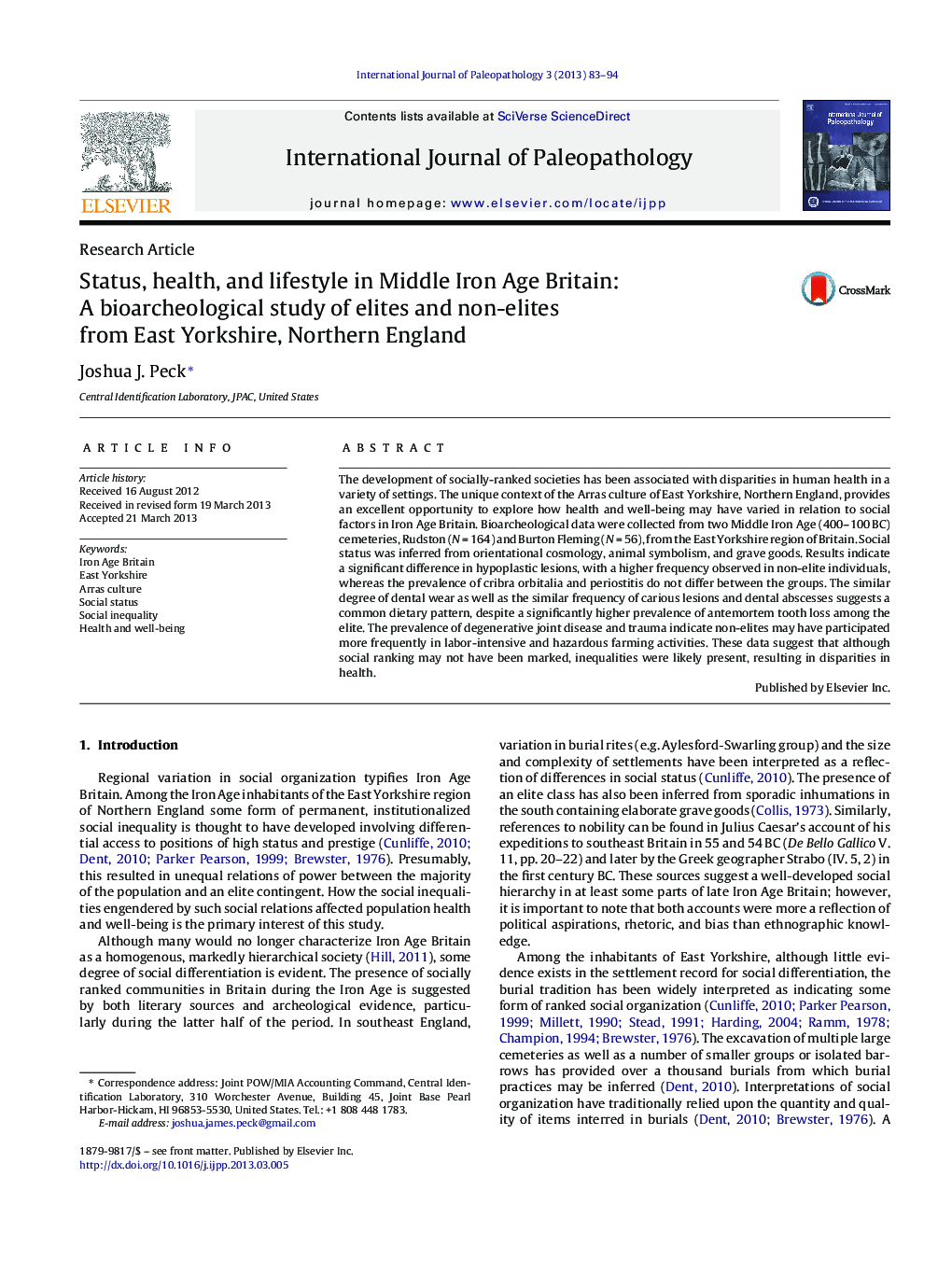| Article ID | Journal | Published Year | Pages | File Type |
|---|---|---|---|---|
| 101434 | International Journal of Paleopathology | 2013 | 12 Pages |
•Health in Iron Age East Yorkshire varied in relation to social status and power.•Non-elite and elite groups differed in their susceptibility to childhood physiological stress.•Non-elites participated more frequently in labor-intensive and dangerous farming activities.•The oral health of non-elite and elite groups suggests a common dietary pattern.•Social ranking was not marked, but social inequalities were likely present.
The development of socially-ranked societies has been associated with disparities in human health in a variety of settings. The unique context of the Arras culture of East Yorkshire, Northern England, provides an excellent opportunity to explore how health and well-being may have varied in relation to social factors in Iron Age Britain. Bioarcheological data were collected from two Middle Iron Age (400–100 BC) cemeteries, Rudston (N = 164) and Burton Fleming (N = 56), from the East Yorkshire region of Britain. Social status was inferred from orientational cosmology, animal symbolism, and grave goods. Results indicate a significant difference in hypoplastic lesions, with a higher frequency observed in non-elite individuals, whereas the prevalence of cribra orbitalia and periostitis do not differ between the groups. The similar degree of dental wear as well as the similar frequency of carious lesions and dental abscesses suggests a common dietary pattern, despite a significantly higher prevalence of antemortem tooth loss among the elite. The prevalence of degenerative joint disease and trauma indicate non-elites may have participated more frequently in labor-intensive and hazardous farming activities. These data suggest that although social ranking may not have been marked, inequalities were likely present, resulting in disparities in health.
